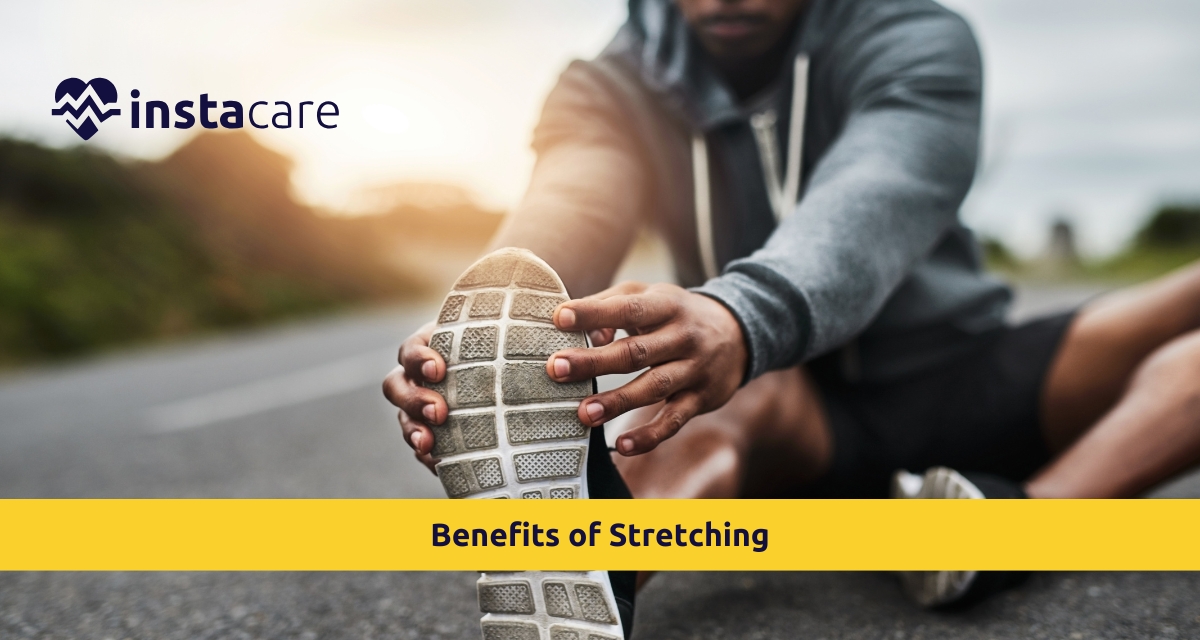The value of stretching exercises fades from public view after people achieve healthy life goals and objectives. Stretching exercises benefit all physical activity practitioners starting from professional athletes, because they enhance lifestyle quality. Stretching provides benefits beyond standard pre- and post-activity benefits since it improves muscle flexibility and reduces muscle stiffness. This text examines fundamental stretching advantages, establishing an everyday stretching practice as necessary.
The Science Behind Stretching
Stretching your muscles causes improved
blood circulation combined with improved physical movements. Regular practice protects your body structure by reducing injuries while making your muscles feel more comfortable and straightening your body position. The various forms of stretching serve unique functions in maintaining proper bodily operation. Knowing when to use each stretching technique matters since passive and active methods provide opposite benefits.
Static vs Dynamic Stretching: Which One Should You Choose?
- You should maintain typical stretching positions between 15-30 seconds. Participants should perform stretching because it enhances their flexibility and delivers optimal results when practiced following their exercise routine.
- Dynamic stretching utilizes controlled exercises to make muscles ready for exercise activities. The pre-workout or sports performance stretch works as an optimal method.
Best Stretching Exercises for Every Muscle Group
A balanced and healthy body requires the most effective stretching exercises for each major muscle group. The Best Stretching Exercises, among many others, include:
- The hamstring stretch effectively extends leg flexibility at the back.
- The quadriceps stretch decreases tension in the knees and the thighs.
- Eases upper body stiffness
- Relieves back and spine tension
- Essential for better posture and mobility
How to Stretch Properly Without Injury?
People's stretching technique errors produce negative results that range from injuries to reduced stretching effectiveness. Proper stretching techniques let you achieve complete muscle benefits with no muscle strain. Proper body warming precedes stretching since stretching stiff muscles might result in injuries and unpleasant sensations.
Stretching for Flexibility: The Secret to a Limber Body
Stretching for Flexibility by delivering its main advantage to physical performance. Aging results in naturally tightening muscles, which reduces our joint movement ability. When you practice stretching exercises for flexibility, you maintain a supple body that reduces daily movements and stops muscles from feeling stiff. Stretching can benefit athletes and active people by leading to better freedom of movement while enhancing physical comfort.
Stretching for Lower Back Pain Relief
Working at a desk has become the leading cause behind widespread lower back pain symptoms in many people. Lower back pain relief comes from stretching because this technique relaxes muscles to improve spinal alignment. Basic stretching techniques for back muscle relief consist of the child's knee-to-chest position and seated forward bend. Regular stretching protects your back from upcoming pain and develops better posture simultaneously.
The Power of a Morning Stretching Routine
The start of each day becomes positive when people stretch themselves first to wake their muscles and boost blood circulation. Morning stretching exercises reduce stiffness, raise energy, and generate positive feelings throughout the day. Starting your day with proper stretching exercises from Your Morning Stretching Routine increases flexibility and reduces muscle stiffness from sleeping.
Why Stretching Before and After Workout Matters?
Most individuals fail to recognize how vital Stretching Before and after Workouts are. Prior to exercise, stretching helps muscles become ready for motion yet simultaneously minimizes the chances of sustaining damage. Stretching leads to better blood circulation in the body, which, together with rising muscle temperature, produces active tissues that respond effectively to exercises.
Stretching after working out helps muscles become less stiff while promoting relaxation. Without stretching practice, muscles are painful, and joint mobility is reduced, making it difficult to maintain steady exercise patterns.
Stretching for Runners: Improve Performance & Prevent Injuries
Stretching is crucial in a runner's practice since it safeguards joints and muscles during intense exercises and enhances athletic capabilities. Regular calf, hamstring, and hip stretches help runners maintain better mobility.
- Regular stretching practices preceding and following your run improve both endurance outcomes and decrease the probability of joint discomfort and muscle damage.
- Stretching as part of training helps runners enhance their stride, and when combined with running practice, it leads to improved running efficiency.
Stretching for Athletes: Enhancing Performance
Athletic training depends on stretching to achieve effectiveness. Stretching for Athletes' practice enables athletes to boost their agile movements and running speed and recover from muscle strain. People who stretch will minimize the possibility of developing muscle imbalances alongside injuries.
Regular stretching practice among athletes creates more efficient movement patterns that improve their athletic performance outcomes. Stretching needs to remain a core element for sports participants and strength trainers to attain durable body flexibility.
How does Stretching Improves Mobility and Joint Health?
People generally do not grasp the advantages of stretching until they directly observe its performance effects. Stretching practices enhance joint well-being because they sustain muscular and connective tissue elasticity. Movements become smoother because stretching reduces muscle tissue stiffness. The range of motion in joints grows larger through stretching because this process proves vital for staying physically active.
Stretching to Prevent Injuries: Stay Safe & Active
Body stress takes the form of muscle tension, which creates discomfort and diminishes flexibility.
Stress relief through stretching is a successful method that produces relaxation of both physical structure and mental state. Deep breathing techniques that match gentle stretching motions help tension release, thus producing mental calmness.
Full-Body Stretching Routine: A Guide to Complete Flexibility
Stretching as a preventive measure stands among the primary reasons to engage in stretching exercises. Restricted muscle movement increases the risk of joint problems, tears, and strains.
Full-Body Stretching Routine: A Guide to Complete Flexibility
Stretching the whole body through a comprehensive routine is fundamental both for enhancing flexibility and for avoiding uneven muscles. Your complete body maintenance depends on stretching all major muscle areas from your neck down to your shoulders, through your back and hips, and all the way to your legs.
The Importance of Stretching Daily for Long-Term Health
The Importance of Stretching Daily Your body every day goes beyond all measures. Your blood circulation will improve when you stretch and your muscles recover better alongside your posture enhancement. Stretching minimizes muscle stiffness while relieving pain, allowing individuals to walk more effortlessly daily.
Conclusion: Make Stretching a Lifelong Habit
Stretching throughout your daily activities will bring the most beneficial outcomes for your flexibility and body health. Consistency represents whether you stretch in the morning or focus on pre-workout and post-workout stretches and stretching for stress relief purposes. Make stretching a part of your lifelong commitment to gain gratitude from your body.
Please book an appointment with the
best Physiotherapist in Lahore, Karachi, Islamabad, and all major cities of Pakistan through
InstaCare, or call our helpline at 03171777509 to find a verified doctor for your disease.

